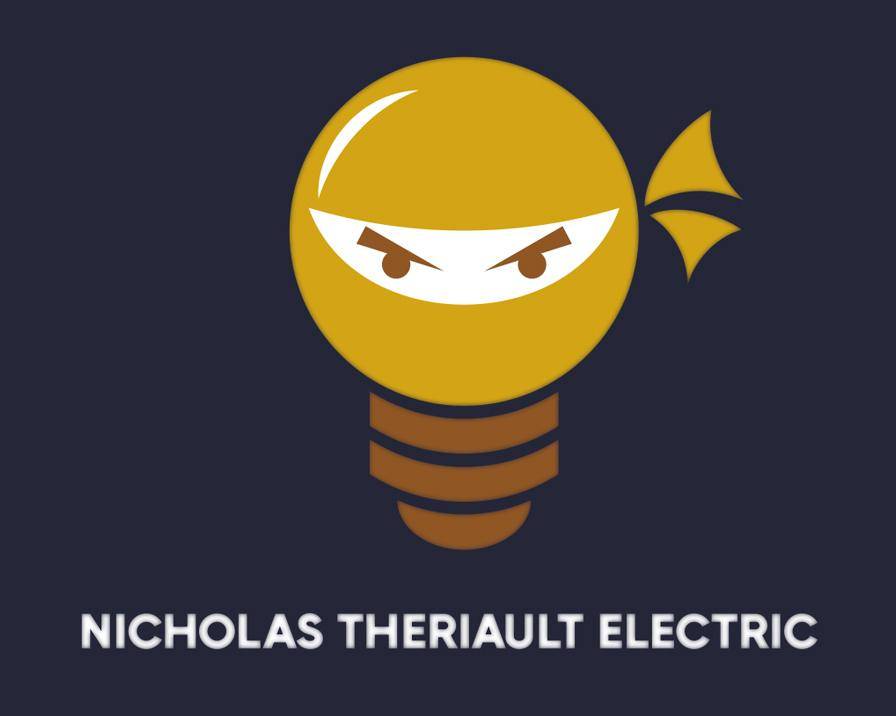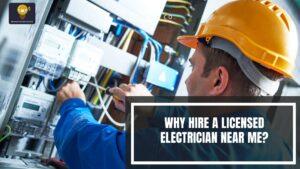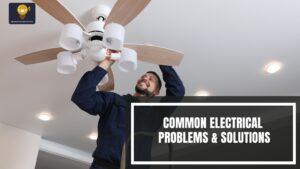Essential Guide to Light Installation and Outdoor Electrical Installation
Lighting is more than just illumination; it plays a crucial role in enhancing the safety, aesthetics, and usability of your outdoor spaces. Whether you’re aiming to highlight landscaping, secure your property, or simply enjoy your backyard after sunset, proper light installation is essential. Incorrectly installed lighting can cause uneven illumination, electrical hazards, and costly repairs down the line. This is especially true for wiring in the outdoors, which involves exposure to weather, moisture, and fluctuating temperatures that indoor systems don’t face.
Understanding electrical installations outdoors
The installation of electrical systems outdoors encompasses all the wiring, fixtures, and safety measures required to set up electricity safely in exterior spaces. This could include lighting pathways, illuminating patios, installing outlets for outdoor appliances, or wiring security systems.
Unlike indoor electrical work, outdoor installations must be weatherproof and built to resist moisture, UV rays, corrosion, and physical damage. Proper installation requires using special materials such as waterproof junction boxes, conduit pipes, and ground-fault circuit interrupters (GFCIs) to protect against shocks. Installing electricity outdoors also demands adherence to strict electrical codes designed to safeguard people and property.
Types of Outdoor Lighting and Their Installation Needs
Choosing the right type of outdoor lighting depends on your goals and space. Each lighting type has unique installation requirements to ensure functionality and safety.
Pathway and Garden Lighting
Pathway lights guide visitors safely along walkways and driveways. These typically use low-voltage systems, which reduce energy consumption and simplify installation. The wiring is generally buried underground using weatherproof cables. Professional installation ensures cables are properly insulated and positioned to prevent damage from landscaping or foot traffic.
Security and Flood Lights
These high-intensity lights deter intruders and improve safety around entrances and dark areas. Floodlights often require high-voltage wiring and sturdy mounts to withstand weather extremes. Motion sensor integration requires additional wiring and configuration to ensure responsive activation.
Deck and Patio Lighting
Lighting decks and patios not only creates ambiance but also prevents accidents in outdoor living areas. Installation requires careful planning to hide wiring beneath decking or railing without creating tripping hazards. Dimmable fixtures may require specialized wiring and compatible dimmer switches.
Landscape Spotlights
Used to highlight trees, statues, or architectural features, landscape spotlights often use weather-sealed mounts and low-voltage wiring. The fixtures need to be positioned carefully for the best effect while protecting wiring from garden tools and lawnmowers.
Smart Outdoor Lighting
Modern smart lighting systems connect to home automation hubs, allowing remote control via apps or voice commands. This requires additional wiring or wireless networking components and precise integration with the home’s electrical system.
Safety Considerations for Outdoor Electrical Work
Wiring outdoors is inherently more complex and hazardous than indoor work. Water and electricity can be a dangerous combination if not handled properly. Here are some vital safety measures:
- Use of Ground-Fault Circuit Interrupters (GFCIs): These devices immediately cut power if an electrical fault is detected, preventing shocks. GFCIs are mandatory for all outdoor outlets and lighting circuits.
- Weatherproof Components: All wiring, fixtures, and junction boxes must be rated for outdoor use. This protects them from moisture, corrosion, and temperature fluctuations.
- Proper Grounding: Correct grounding ensures electricity safely dissipates in case of a fault, protecting people and equipment.
- Code Compliance: Outdoor electrical work must follow local and national electrical codes. This ensures installations meet safety standards and pass inspections.
- Avoiding Overloads: Circuits should be designed to handle the electrical load safely without tripping breakers or overheating wires.
DIY outdoor electrical projects often overlook these safety factors, putting property and lives at risk. Licensed electricians are trained to follow these protocols, ensuring a safe, reliable system.
Benefits of Professional Light Installation Services
While some homeowners attempt DIY light installation, hiring professionals comes with clear advantages:
- Expert Knowledge: Electricians understand electrical theory, wiring techniques, and code requirements. They ensure your system is both functional and legal.
- Safety: Professionals use industry-standard materials and follow strict safety protocols, reducing the risk of electrical fires or shocks.
- Quality Workmanship: Proper wiring and secure fixture mounting extend the lifespan of your lighting system.
- Time and Cost Efficiency: Professionals can troubleshoot problems quickly and avoid costly mistakes.
- Warranty and Support: Many electricians offer warranties on parts and labor, providing peace of mind and post-installation support.
- Customised Solutions: Experts tailor your lighting design and installation to your property’s specific needs and your personal preferences.
Choosing professional light installation means investing in a long-lasting, safe, and visually appealing outdoor lighting system.
Common Outdoor Electrical Installation Projects
Outdoor electrical installation covers a wide range of projects designed to improve both functionality and enjoyment of your outdoor spaces.
- Landscape and Pathway Lighting: Enhances safety and beautifies gardens and walkways.
- Security Lighting: Includes floodlights and motion sensors to deter crime and increase nighttime visibility.
- Outdoor Power Outlets: Provides convenient power for grills, holiday lights, water features, and tools.
- Pool and Fountain Lighting: Adds ambiance and safety around swimming pools and water features, often requiring waterproof fixtures and special wiring.
- Outdoor Heating Systems: Wiring for patio heaters or fire pits to extend outdoor usability into cooler seasons.
- Solar-Powered Lighting Systems: Integration with solar panels for sustainable, energy-efficient lighting solutions.
Each project requires careful design and installation to ensure electrical safety and durability.
How to Choose the Right Electrical Contractor for Outdoor Work
Selecting the right electrician for wiring outdoors can make or break your project. Keep these factors in mind:
- Licensing and Insurance: Always verify that contractors are licensed and carry liability insurance to protect you and your property.
- Experience with Outdoor Projects: Choose electricians who specialize in outdoor electrical systems and have proven track records.
- Positive Customer Reviews: Check online reviews and ask for references to learn about others’ experiences.
- Detailed, Transparent Quotes: Avoid contractors who provide vague or incomplete estimates. A clear quote helps prevent surprise costs.
- Permit Handling: Ensure your contractor obtains necessary permits and schedules inspections to meet local regulations.
- Communication: A good electrician should be responsive, explain the process clearly, and answer your questions patiently.
Taking the time to vet electricians helps ensure a smooth installation experience and a quality end result.
Cost Factors and Long-Term Value
The cost of light installation and wiring outdoors varies widely depending on several factors:
- Project Size and Complexity: Larger projects or those requiring trenching, conduit, or complex wiring will cost more.
- Type and Number of Fixtures: High-end fixtures, smart systems, or specialty lighting can increase material costs.
- Existing Electrical Infrastructure: Upgrading outdated wiring or electrical panels adds labor and material costs.
- Permits and Inspections: Fees vary by location but are essential for safe, legal installation.
- Labor Rates: Experienced electricians charge premium rates but provide superior workmanship and peace of mind.
Though the upfront costs might seem significant, professionally installed outdoor lighting adds value by improving safety, lowering energy use, and boosting curb appeal. Well-lit properties often attract higher resale values and create more enjoyable outdoor living spaces.
Conclusion & Next Steps
Proper light installation and outdoor electrical installation are essential for creating safe, beautiful, and functional exterior environments. Whether you want to illuminate your garden, enhance home security, or add convenient outdoor power, professional electrical services ensure your installation meets safety standards and performs reliably. Attempting DIY outdoor electrical work can lead to safety hazards, code violations, and expensive repairs. Hiring licensed, experienced electricians guarantees that your project is completed efficiently and up to code.
FAQs
What’s the difference between indoor and outdoor wiring?
Outdoor installations require weatherproof materials and special safety devices like GFCIs to protect against moisture and environmental exposure.
Can I install outdoor lighting myself?
Simple installations might be manageable for skilled DIYers, but complex wiring and safety requirements generally call for professional electricians.
How long does an outdoor lighting installation take?
Depending on project size, installations can take from a few hours to several days.
Are permits required for electrical installations outside?
Most jurisdictions require permits to ensure work meets safety codes. Licensed electricians typically handle the permitting process.
How can I maintain my outdoor electrical system?
Regular inspections, cleaning fixtures, promptly replacing bulbs, and protecting wiring from damage help prolong system life.



